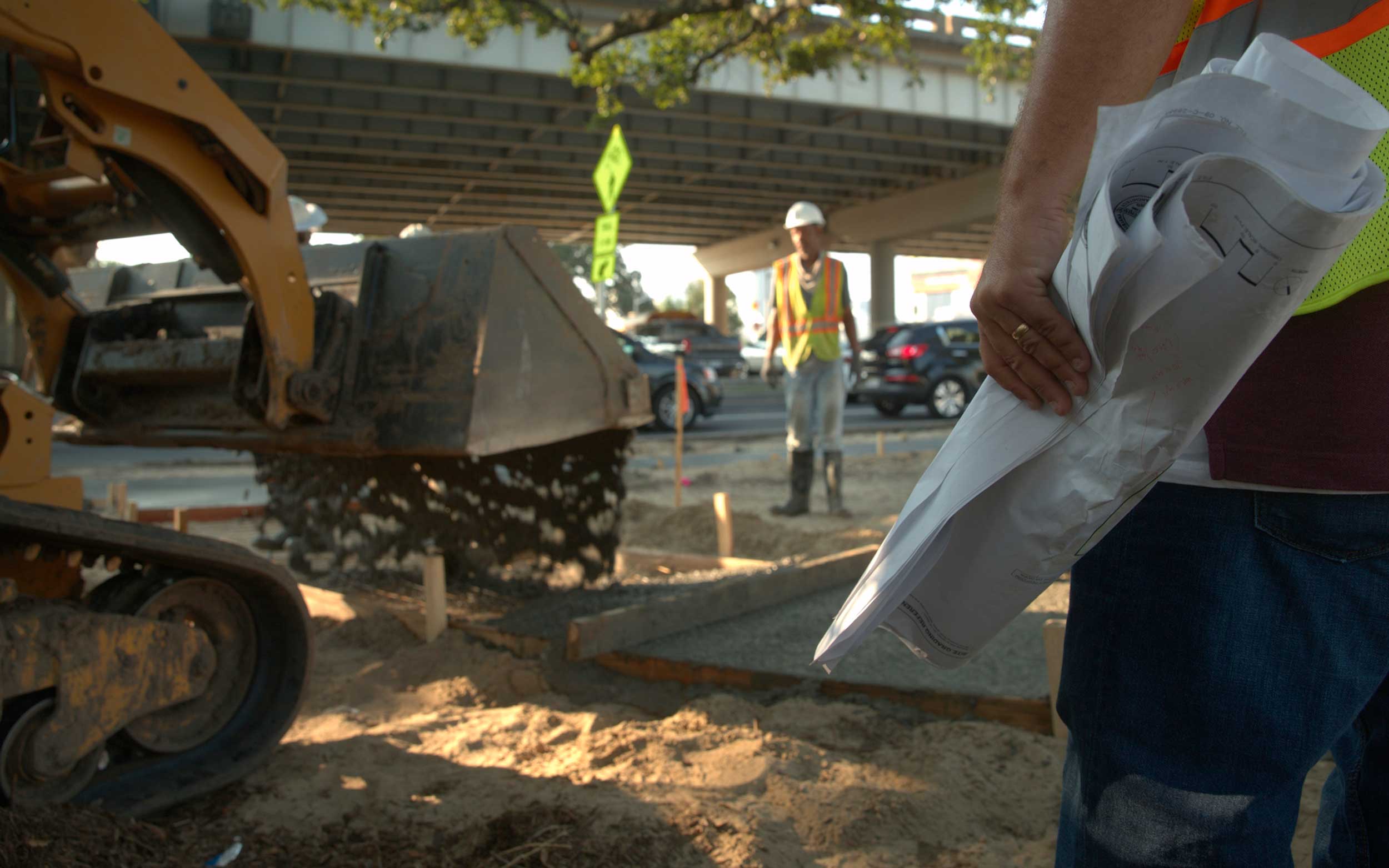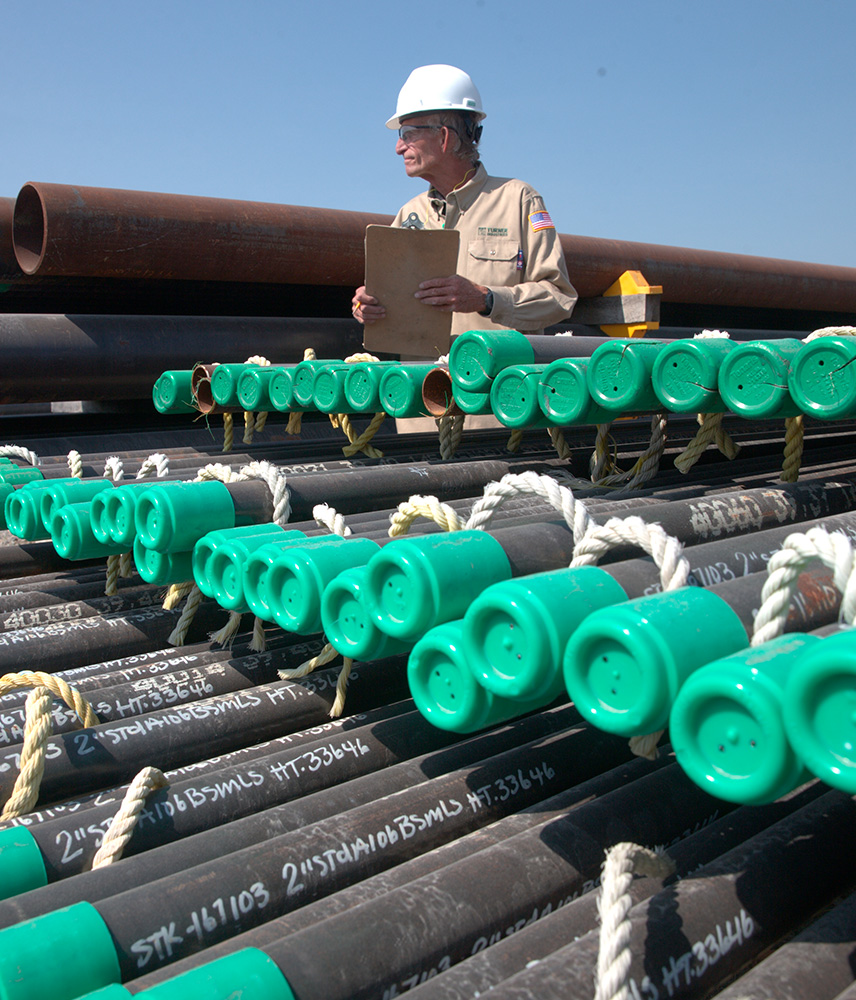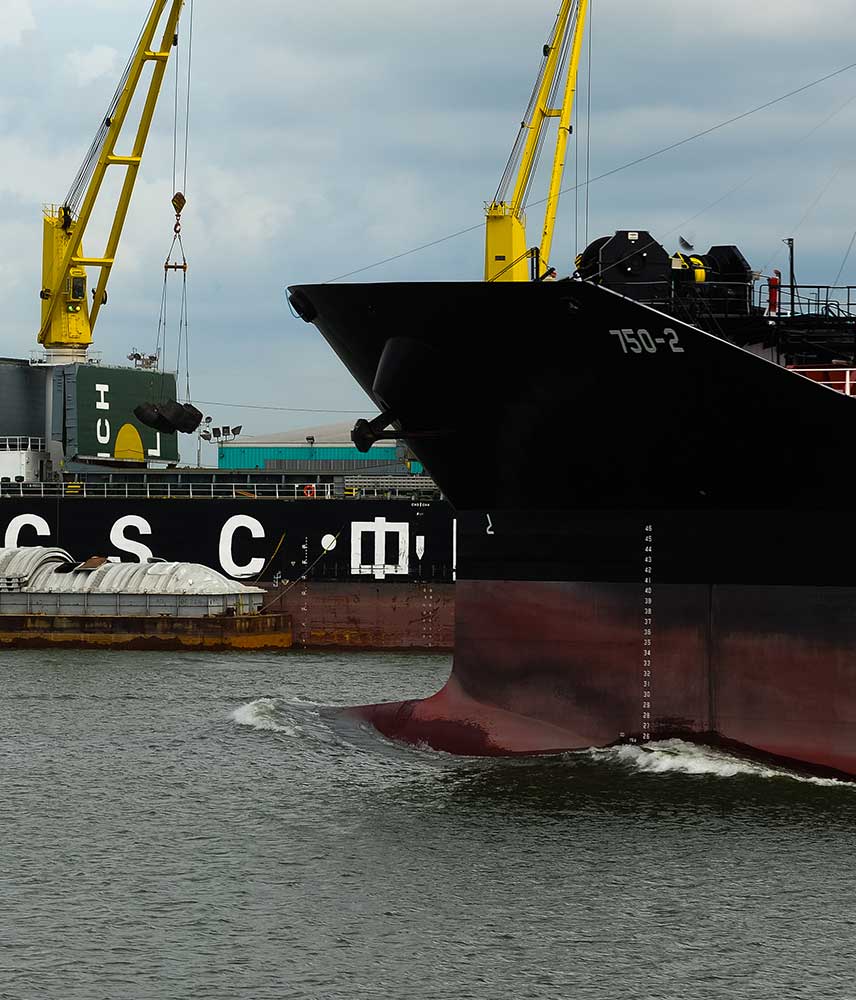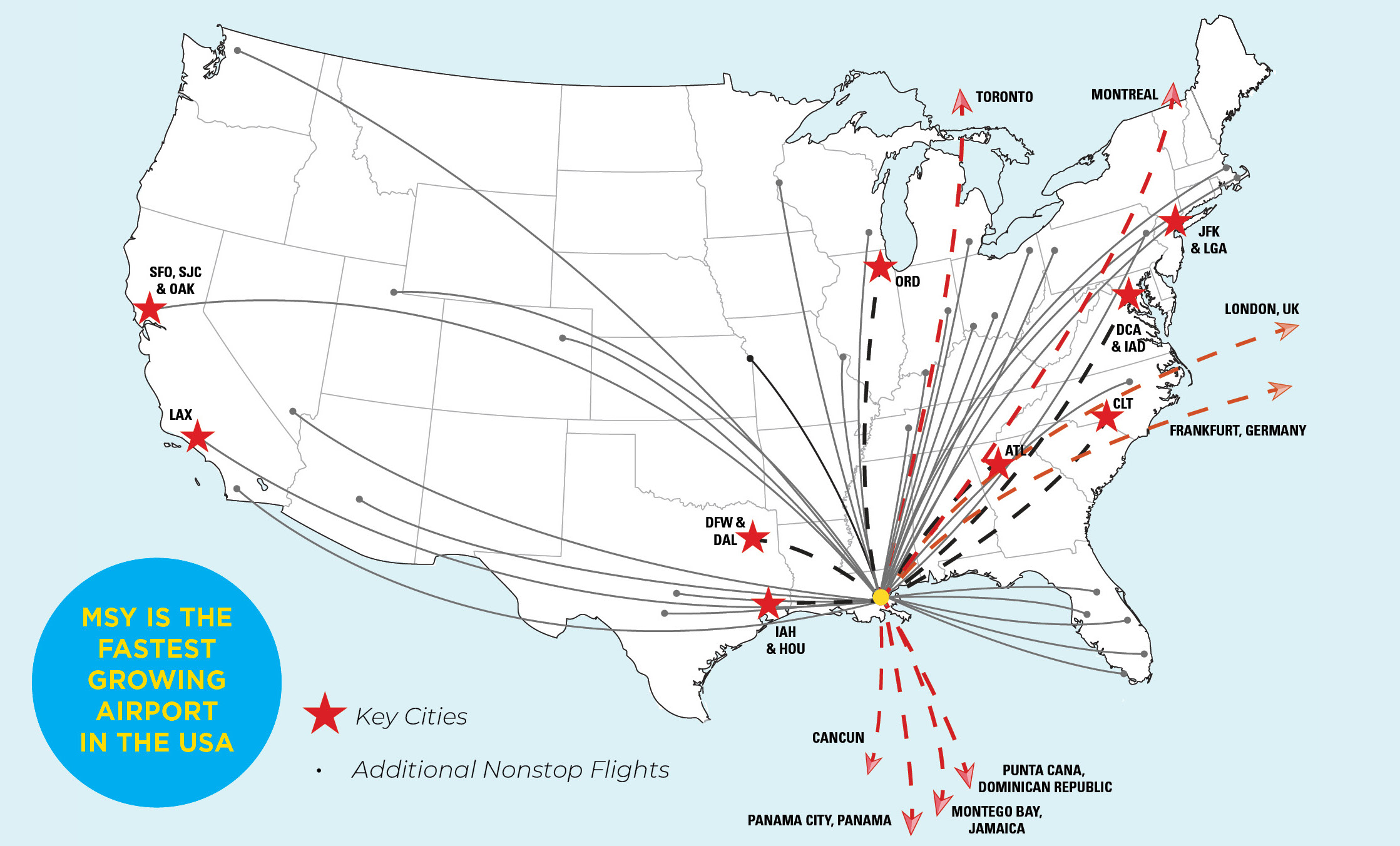Transportation & Utilities

Transportation and Utility Assets in Greater New Orleans
Located at the mouth of the Mississippi River, the Greater New Orleans region was founded as the nation’s logistical hub and continues to offer unparalleled infrastructure system. Its location alone—which offers availability of land with deep-water access—is cause for trade, logistics, and distribution companies to take a closer look at the region.
With a world-class port system, integrated multimodal transportation infrastructure, an international airport, and a skilled workforce, thousands of transportation and logistics companies now call Greater New Orleans home.
Many of our region’s logistical assets have had record years, including the Louis Armstrong New Orleans International Airport setting all-time-high passenger records, the Port of New Orleans setting a new container traffic record in 2024, and the Port of South Louisiana continuously ranking as the largest port in the country in terms of total tonnage.
In addition to this high connectivity for manufacturing and industrial companies require to bring their good into commerce, the Greater New Orleans region provides these services at some of the lowest utility rates in the country.
Rankings & Facts/Figures



Deep Draft Ports
Greater New Orleans

Class I Railroads
Greater New Orleans

A World-Class Port System
Four major facilities sit near the mouth of the Mississippi River, providing vital Supply Chain support
Southeast Louisiana is home to one of the most advanced seaport systems in the world. Four ports are located in the Greater New Orleans region – Port of New Orleans, Port of South Louisiana, St. Bernard Port, Harbor and Terminal District, and the Plaquemine Port, Harbor, and Terminal District – each taking full advantage of the waterways which originally inspired settlement in the area.
These facilities store, process, and deliver goods that are either grown and produced in the heart of the country, or products that are being imported into the United States from other countries. The activity at these facilities makes this port system among the largest in the nation, leading the country in terms of volume and the #5 system by value.
| Total Volume | ||
| Rank | Customs District | Metric Tons (millions) |
| 1 | New Orleans, LA | 255,153 |
| 2 | Houston/Galveston, TX | 242,045 |
| 3 | Los Angeles, CA | 124,928 |
| 4 | New York City, NY | 79,844 |
| 5 | Port Arthur, TX | 68,185 |
| Total Value | ||
| Rank | Customs District | Millions |
| 1 | Los Angeles, CA | 373,169 |
| 2 | New York City, NY | 187,751 |
| 3 | Houston-Galveston, TX | 147,803 |
| 4 | Savannah, GA | 100,634 |
| 5 | New Orleans, LA | 83,469 |
Air Travel Upgraded with New Terminal
Millions of passengers move in and out of the market each year, now being serviced by a brand-new facility
The Louis Armstrong New Orleans International Airport plays a dual role of serving as a port of entry for visitors and a vital transportation resources for local residents and companies.
To better service our growing population and business growth, a new airport terminal was recently built to increase capacity for additional flights and better serve the airport’s growing demand – at over 13 million passengers annually.
The airport terminal opened in November 2019 and provides better access and easier travel to Greater New Orleans. This state-of-the-art facility was designed by Cesar Pelli and includes 3 connected concourses that serve over 30 gates with room to expand. Amenities includes a large offering of local restaurants, new lounge areas, and streamlined security areas.
Louis Armstrong International Airport now offers a record number of non-stop flights including direct service to London, Frankfurt, Montreal, Panama, and many more. The new terminal and resulting lower costs for airlines will help ensure that even more new flights enter the market.
Rail Lines and Highways in Greater New Orleans
Greater New Orleans succeeds due to a complex network of rail providers and highway connectivity to both coasts
New Orleans is the only seaport in the United States to be served by all six of these Class-One railroads – Union Pacific, CSX, CN, Norfolk Southern, BNSF, and Kansas City Southern – which allows for direct access to a 133,000-mile rail network. This system ensures that the goods flowing in and out of the various ports in the region end up in their final destinations.
The area is also accessible from several major Interstate roads – I-55, I-10, I-12, and I-59 – which offer easy access to the Gulf Coast, the Midwestern United States, and the Southwest. Locally, the streamlined roadway system allows for extremely short commuter times around the region, providing locals with easy access to nearly any activity and more time at home instead of behind the wheel.
Low Energy Costs for Manufacturing and Industrial Operations
Louisiana and the Greater New Orleans region continuously have some of the lowest utility costs in the country.
Due in large part to Louisiana’s abundance of natural resources and status as an energy hub, commercial utility rates in the region and state are some of the most affordable rates in the country.
In fact, the average price of electricity for the industrial sector in Louisiana is 5.19 cents per kilowatt-hour, the second lowest in the country. Meanwhile, at 8.59 cents per kilowatt-hour, Louisiana’s average commercial electricity rate is the seventh lowest in the country. For reference the average U.S. manufacturing facility utilizes 95.1 kilowatt-hours (kWh) of electricity, meaning that a manufacturing facility in Louisiana would spend $4.93, compared to $6.74 nationally.
These low energy costs allow for businesses to keep their operating expenses to a minimum, while increasing productivity.
Enplanement Growth Through Time
Nonstop Continental U.S. Flights
Nonstop International Flights Weekly


Transportation and Logistics State of the Sector
A report highlighting the scope and context of labor demand from the region’s Supply Chain and Logistics industry
Mailing List
Receive news and updates on new companies moving into Greater New Orleans, regional awards, and other information about how the local economy is growing.

